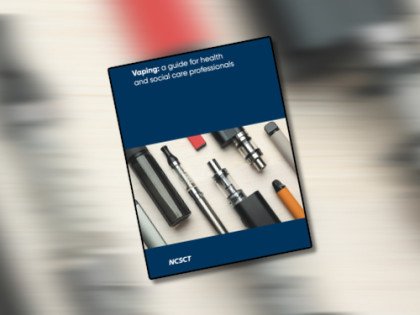Mark Stockdale was in shock after his electronic cigarette exploded in his child’s bedroom. “I plugged it into my iPhone charger and, in ten minutes time, it exploded,” he said.
“I dread to think what could have happened if I’d left it charging and gone out or if we’d been asleep. It could’ve killed us and gutted our home.”
Mark Rolfe, from Kent County Council Trading Standards, said: “The number of unsafe chargers appearing on the market has grown quite alarmingly, and we are keen to work with all of our partners to ensure that the public understand that you use the right charger.”
The KFRS were called to the house in London Road to find that fortunately the fire was already out. Firefighters treated Mr Stockdale for burns to his fingers and palm.
A month previously, a house in Sheerness caught fire in a similar incident – prompting Charlie Smith, KFRS community safety manager, to comment: “If your New Year’s resolution is to quit smoking and you’re using an e-cigarette to help you, please make sure you know how to charge it safely.”
“You might save a few pounds if you buy cheap or incompatible chargers but is it really worth putting your family or home at risk? If your e-cigarette doesn't come with a charger, please don't assume that your USB cables can be transferred between devices. Chargers for mobile phones are often more powerful, so can overheat.”
Shropshire Fire and Rescue Service have been carrying out a similar raising awareness campaign following more than 100 related fires in the West Midlands.
Both services are putting out the following messages:
- Check your smoke alarm every week.
- Only use the charger supplied with your e-cigarette and follow the manufacturer’s instructions.
- If no charger is supplied check with the manufacturer or vendor for a list of approved chargers.
- Read the instructions on how to clean the battery centre pin and charger contact.
- Don’t leave it charging overnight, unattended or charging on flammable surfaces such as a bed or sofa.
- Don’t over-tighten the battery – especially when charging.
- Never charge a battery that has signs of damage, that has been dropped, or has been subjected to impact.
- Never plug a charger into a non-approved mains power transformer.
- Check that your e-cigarette battery has overcharge or overheat protection.
- Remove the battery from charge when complete – don’t over charge.
- Don’t use if wet or exposed to water.
- Ensure that you dispose of batteries correctly.
- Always have a working smoke alarm in your home.
Photo Credit:
Top Photo credit: Sam Beebe, Ecotrust via photopin cc
Dave Cross
Journalist at POTVDave is a freelance writer; with articles on music, motorbikes, football, pop-science, vaping and tobacco harm reduction in Sounds, Melody Maker, UBG, AWoL, Bike, When Saturday Comes, Vape News Magazine, and syndicated across the Johnston Press group. He was published in an anthology of “Greatest Football Writing”, but still believes this was a mistake. Dave contributes sketches to comedy shows and used to co-host a radio sketch show. He’s worked with numerous start-ups to develop content for their websites.
Join the discussion
Vape Protection Alliance: Fundraising To Fight Government
Vape businesses are coming together to fundraise £75,000 in order to challenge the government’s threat to vaping and vape flavours
New Year, New Quit Campaign
Smokers are being encouraged to quit smoking this new year as part of the annual NHS push to reduce the numbers (5.3 million in England) to make a quit attempt this January
Parliament
MPs wanted to know how children are being educated about vaping risks and when we can expect the Education Department to publish its statutory guidance in the Relationships, Sex and Health Education curriculum
NCSCT Updates Professional Guidance
The National Centre for Smoking Cessation and Training (NCSCT) has updated its vaping guide for health and social care professionals











